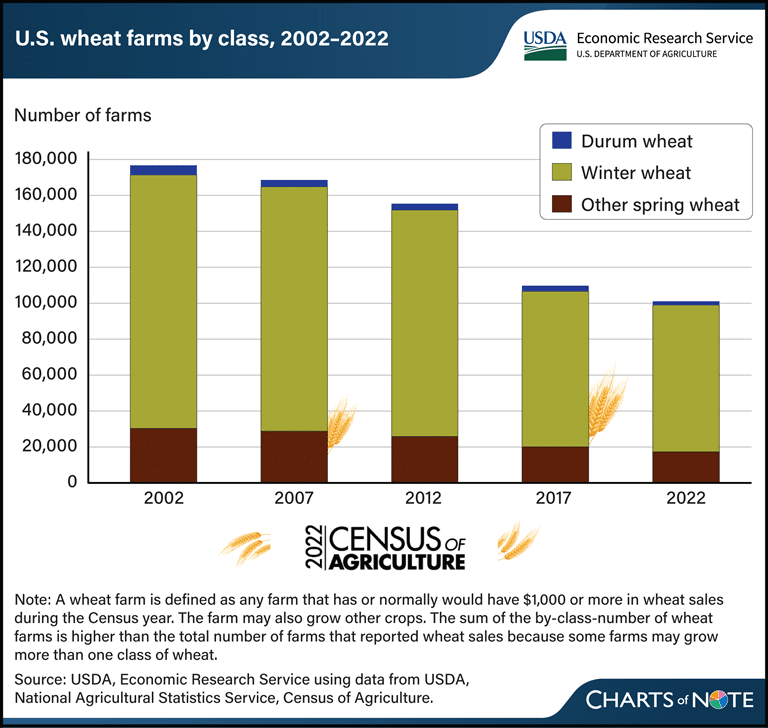Findings provide extensive overview of U.S. farms and ranches.
The National Agricultural Statistics Service (NASS) of the U.S. Department of Agriculture (USDA) has released the findings of the 2022 Census of Agriculture, which offers an extensive overview of the nation’s farms and ranches, encompassing over 6 million data points down to the county level. The data, gathered directly from producers, indicates a continued decrease in the total number of U.S. farms, but also reveals an increase in the number of new and beginning producers (operating for 10 or fewer years on any farm) and young producers (under the age of 35).
The complete report of the Census of Agriculture and the publication dates for additional agricultural census data products are available at nass.usda.gov/AgCensus. The ag census data can also be accessed through NASS’s online database, Quick Stats.
NASS Administrator Hubert Hamer expressed satisfaction in providing updated Census of Agriculture data to all stakeholders in U.S. agriculture, particularly the producers who participated in the survey. He emphasized that the census data, updated every five years, help in identifying trends and shifts in the industry over time, aiding producers in their business operations. While acknowledging changes in U.S. agriculture, Hamer noted that the data remain largely consistent with the previous ag census, with new data on topics such as hemp, precision agriculture, and internet access.
Key insights from the ag census data include:
- A 7% decrease in the number of farms and ranches from 2017, totaling 1.9 million, with an average size of 463 acres (up 5%) on 880 million acres of farmland (down 2%), representing 39% of all U.S. land.
- Family-owned and operated farms constitute 95% of all U.S. farms and manage 84% of farm land.
- U.S. farms and ranches generated $543 billion in agricultural products, an increase from $389 billion in 2017, with net cash income of $152 billion after $424 billion in production expenses. The average farm income rose to $79,790, with 43% of farms reporting positive net cash farm income in 2022.
- Internet access on farms continued to rise, reaching 79% in 2022 from 75% in 2017.
- A 15% increase in the use of renewable energy systems on farms and ranches, with the majority (76%) using solar panels.
- Direct sales to consumers by 116,617 farms amounted to $3.3 billion, a 16% increase from 2017.
- Farms with sales of $1 million or more constituted 6% of U.S. farms and 31% of farmland, accounting for over three-fourths of all agricultural product sales. Farms with sales of $50,000 or less made up 74% of farms, 25% of farmland, and 2% of sales.
- The majority of farmland was used for oilseed and grain production (32%) and beef cattle production (40%).
- The average age of all producers increased slightly to 58.1, up 0.6 years from 2017, with beginning farmers averaging 47.1 years.
- Producers under age 35 made up 9% of all producers, with farms managed by young producers tending to be larger in both acres and sales.
- Female producers accounted for 36% of all producers, with 58% of all farms having at least one female decision maker.
- The response rate for the 2022 Census of Agriculture was 61%, with over 40% of responses submitted online.
The Census of Agriculture, first conducted in 1840 and managed by USDA NASS since 1997, remains the most comprehensive source of agricultural data for every state and county in the United States.











